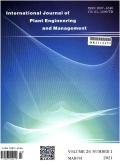iB1350: Part 1 — A Generation III.7 Reactor iB1350 and Defense in Depth (DiD)
International Journal of Plant Engineering and Management
Pub Date : 2018-07-22
DOI:10.1115/ICONE26-82428
引用次数: 0
Abstract
iB1350 stands for an innovative, intelligent and inexpensive boiling water reactor 1350. It is the only Generation III.7 reactor incorporating Fukushima lessons learned and complying with Western European Nuclear Regulation Association (WENRA) safety objectives. It is about twice safer than any existing Gen III.5 reactors. It has 7-day grace period for SBO and SA without containment venting. It enables no evacuation and no long-term relocation in SA. It, however, is based on the well-established proven ABWR. The NSSS and TI are exactly the same as those of the existing ABWR. The iB1350 only enhanced the ABWR safety by adding an outer well (OW) as additional PCV volume, built-in passive safety systems (BiPSS) for SA, DEC systems and an APC shield dome over the containment. The BiPSS include an isolation condenser (IC), an innovative passive containment cooling system (iPCCS), in-containment filtered venting system (IFVS), and innovative core catcher (iCC). All the BiPSS are embedded and protected in the containment building against APC. No specialized safety features remote from the R/B are necessary, which reduces plant cost. The primary system has only one integrated RPV. There are no SGs, no pressurizer, no core makeup tanks, no accumulators, no hot legs, and no cold legs. The iB1350 consists of only one integrated RPV and passive safety systems inside the containment building. This configuration is simpler than the simplest large PWR and as simple as SMR. While SMR have rather small outputs, the iB1350 has 1350 MWe output. It is simple, large and economic. As for the safety design it has an in-depth hybrid safety system (IDHS). The IDHS consists of 4 division active safety systems for DBA, 1 or 2 division active safety systems for DEC and the built-in passive safety systems (BiPSS) for SA. The IDHS is originally based on the four levels of safety that have provided an explicit fourth defense level against devastating external events even before 3.11. It also can be explained along with WENRA Defense in Depth (DiD). It is said that independence between DiD levels are important. However, there are many exceptions for independence between DiD levels. For example, SCRAM is used in DiD2, DiD3a and DiD3b. Any DiD that allows exceptions of independence of DiD levels is fake. The iB1350 is rather based on the three levels of safety proposed by Clifford Beck (AEC, 1967). There is complete independence between level 2 (core systems) and level 3 (containment systems) without any exceptions of independence. DiD without exceptions of independence is a real DiD. Only passive safety reactors can meet the real DiD.iB1350:第1部分- III.7代反应堆iB1350和纵深防御(DiD)
iB1350代表一种创新、智能和廉价的沸水反应堆。它是唯一一个吸取福岛核事故教训并符合西欧核监管协会(WENRA)安全目标的III.7代反应堆。它比任何现有的III.5型反应堆都要安全两倍左右。SBO和SA有7天的宽限期,没有密闭通风。它不允许在南南非进行疏散和长期搬迁。然而,它是基于公认的ABWR。NSSS和TI与现有ABWR完全相同。iB1350仅通过增加外井(OW)作为额外的PCV体积,内置被动安全系统(BiPSS)用于SA, DEC系统和APC屏蔽圆顶来提高ABWR的安全性。BiPSS包括一个隔离冷凝器(IC)、一个创新的被动安全壳冷却系统(iPCCS)、安全壳内过滤通风系统(IFVS)和创新的堆芯捕集器(iCC)。所有的BiPSS都被嵌入并保护在围堵建筑中,以对抗APC。不需要远离R/B的特殊安全功能,从而降低了工厂成本。主系统只有一个集成RPV。没有SGs,没有稳压器,没有核心补给罐,没有蓄电池,没有热腿,也没有冷腿。iB1350在安全壳内仅由一个集成的RPV和被动安全系统组成。这种配置比最简单的大型压水堆和SMR一样简单。而SMR有相当小的输出,iB1350有1350兆瓦输出。它简单、庞大、经济。在安全设计方面,采用了深入的混合安全系统(IDHS)。IDHS由DBA的4分部主动安全系统,DEC的1或2分部主动安全系统和SA的内置被动安全系统(BiPSS)组成。IDHS最初基于四个安全级别,甚至在3.11之前就提供了针对破坏性外部事件的明确的第四个防御级别。它也可以与WENRA纵深防御(DiD)一起解释。据说DiD级别之间的独立性很重要。然而,DiD级别之间的独立性有很多例外。例如,在DiD2, DiD3a和DiD3b中使用SCRAM。任何允许DiD级别独立异常的DiD都是假的。iB1350是基于Clifford Beck (AEC, 1967)提出的三个安全级别。2级(核心系统)和3级(密封系统)之间是完全独立的,没有任何例外。没有独立例外的独立才是真正的独立。只有被动安全反应堆才能满足真正的DiD。
本文章由计算机程序翻译,如有差异,请以英文原文为准。
求助全文
约1分钟内获得全文
求助全文

 求助内容:
求助内容: 应助结果提醒方式:
应助结果提醒方式:


